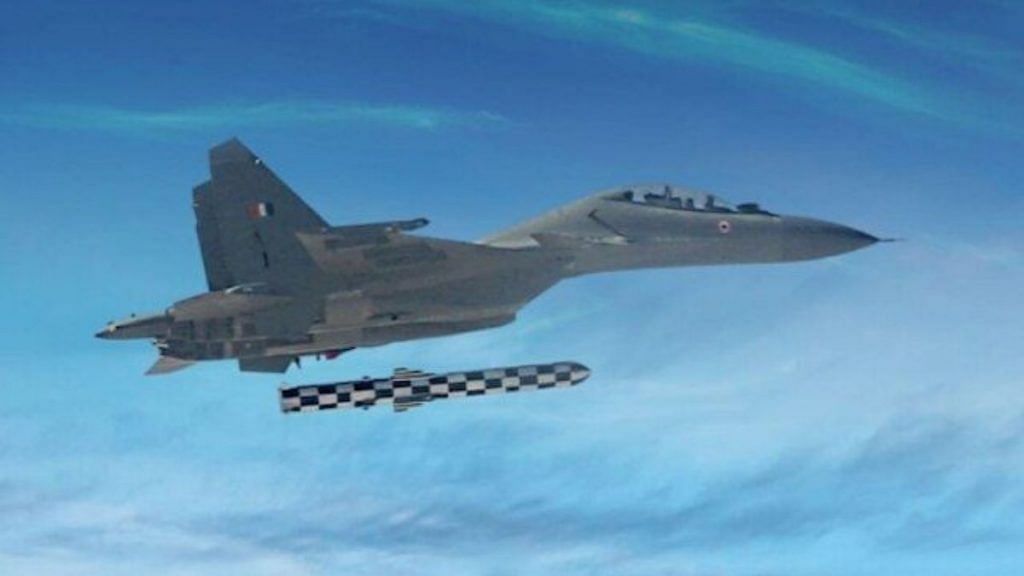SOURCE: AFI


The Indian Air Force (IAF) faces a critical challenge in maintaining its strategic deterrence and operational effectiveness due to the absence of a dedicated bomber fleet and limited air-launched cruise missile (ALCM) capabilities. As regional security dynamics evolve, particularly with China’s growing military prowess, the IAF must address this gap to ensure credible deterrence and precision strike capabilities.
Unlike major powers such as the United States, Russia, and China, which maintain fleets of long-range strategic bombers, the IAF lacks a comparable platform. India’s current fighter aircraft, including the Su-30 MKI, Mirage 2000, and Rafale, are multi-role jets with limited range and payload compared to dedicated bombers like China’s H-6 or Russia’s Tu-95. These fighters, while versatile, are not optimized for deep-penetration strikes or delivering large payloads over extended distances, critical for strategic missions against heavily defended targets.
China’s People’s Liberation Army Air Force (PLAAF) has modernized its H-6 bombers, equipping them with advanced ALCMs like the CJ-20, which boasts a range of over 2,000 km. This enables China to project power across the Indo-Pacific, threatening key Indian assets. In contrast, the IAF’s reliance on fighter jets restricts its ability to conduct long-range, high-impact strikes, particularly in a contested environment.
The IAF’s ALCM capabilities are also limited. The BrahMos-A, an air-launched variant of the supersonic cruise missile, has a range of approximately 300-400 km, which is insufficient for stand-off strikes against distant or well-defended targets. While the Nirbhay cruise missile, with a range of 800-1,000 km, is under development, its integration with IAF platforms is still ongoing. These limitations leave the IAF at a disadvantage compared to adversaries with mature ALCM arsenals.
The absence of a bomber-ALCM combination undermines India’s deterrence posture, particularly against China. In a potential conflict, the IAF would struggle to target critical infrastructure deep within enemy territory, such as command-and-control centers or logistics hubs. This gap also limits India’s ability to respond symmetrically to China’s long-range strike capabilities, which could embolden Beijing in a crisis.
Moreover, the IAF’s reliance on ballistic missiles like the Agni series, operated by the Strategic Forces Command, does not fully compensate for the lack of air-launched strategic options. Bombers and ALCMs offer greater flexibility, precision, and recallability compared to ballistic missiles, making them essential for nuanced escalation control.
The Way Forward
To bridge this gap, the IAF must pursue a multi-pronged strategy:
- Procure or Develop a Bomber Platform: Acquiring a strategic bomber, such as a variant of the Russian Tu-160 or developing an indigenous platform, could address the range and payload limitations of existing fighters. Collaboration with friendly nations or leveraging India’s growing defense industry could expedite this process.
- Enhance ALCM Capabilities: Fast-tracking the development and integration of the Nirbhay missile, while exploring longer-range ALCMs, is critical. The IAF should also consider acquiring or co-developing advanced stand-off munitions with ranges exceeding 1,500 km.
- Invest in Force Multipliers: Strengthening aerial refueling capabilities and integrating unmanned combat aerial vehicles (UCAVs) could enhance the IAF’s long-range strike potential. UCAVs, in particular, could complement manned platforms by undertaking high-risk missions.
- Doctrinal Evolution: The IAF must refine its operational doctrine to incorporate long-range strike platforms and ALCMs, ensuring seamless integration with existing assets and joint operations with the Army and Navy.
The IAF’s lack of a dedicated bomber fleet and robust ALCM capabilities is a strategic vulnerability that must be addressed urgently. As India navigates an increasingly volatile geopolitical landscape, investing in these capabilities is not just a matter of military modernization but a necessity for maintaining credible deterrence and safeguarding national security. The time to act is now, lest India’s airpower lag behind its aspirations as a regional power.
NOTE: AFI is a proud outsourced content creator partner of IDRW.ORG. All content created by AFI is the sole property of AFI and is protected by copyright. AFI takes copyright infringement seriously and will pursue all legal options available to protect its content.